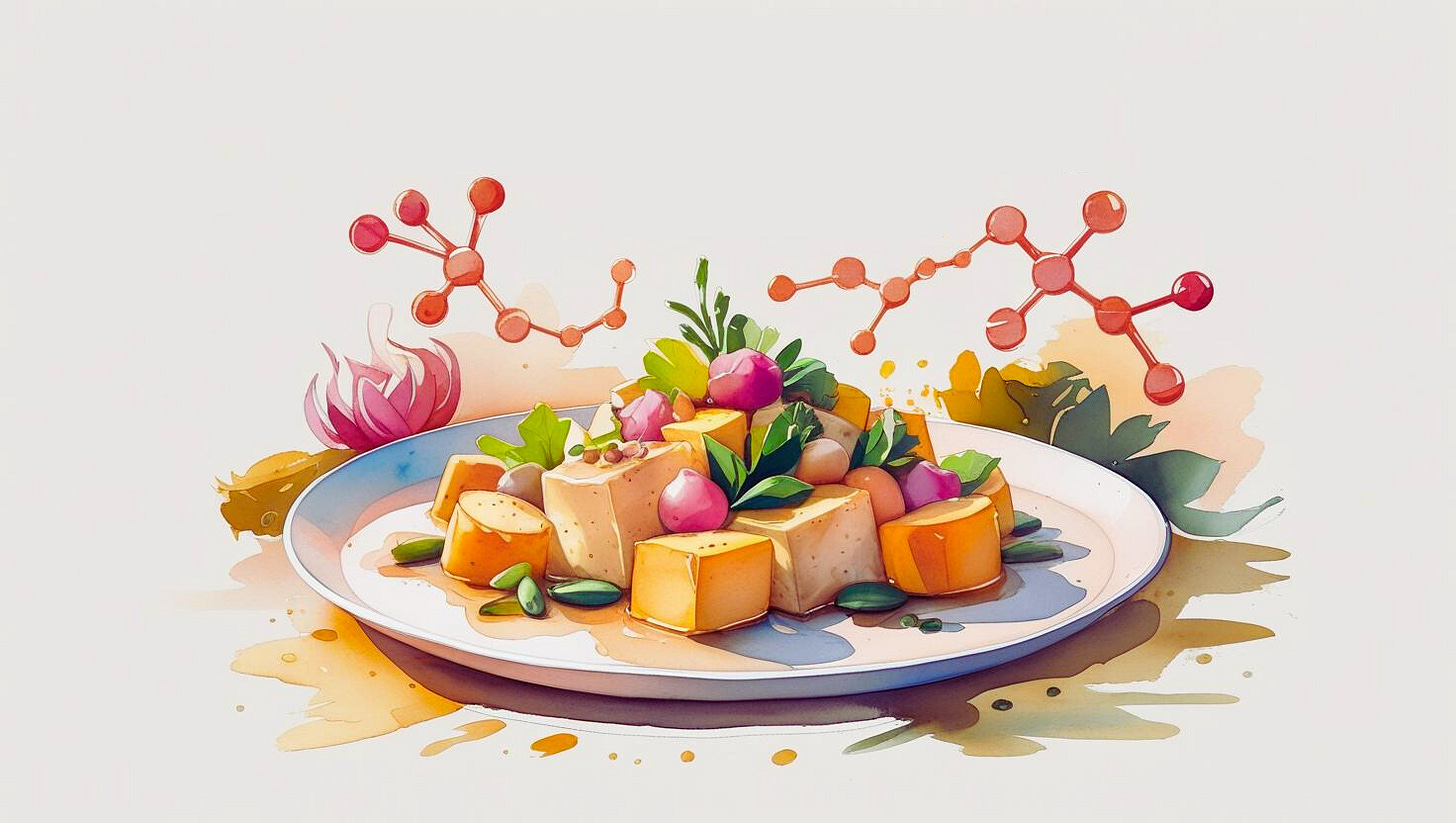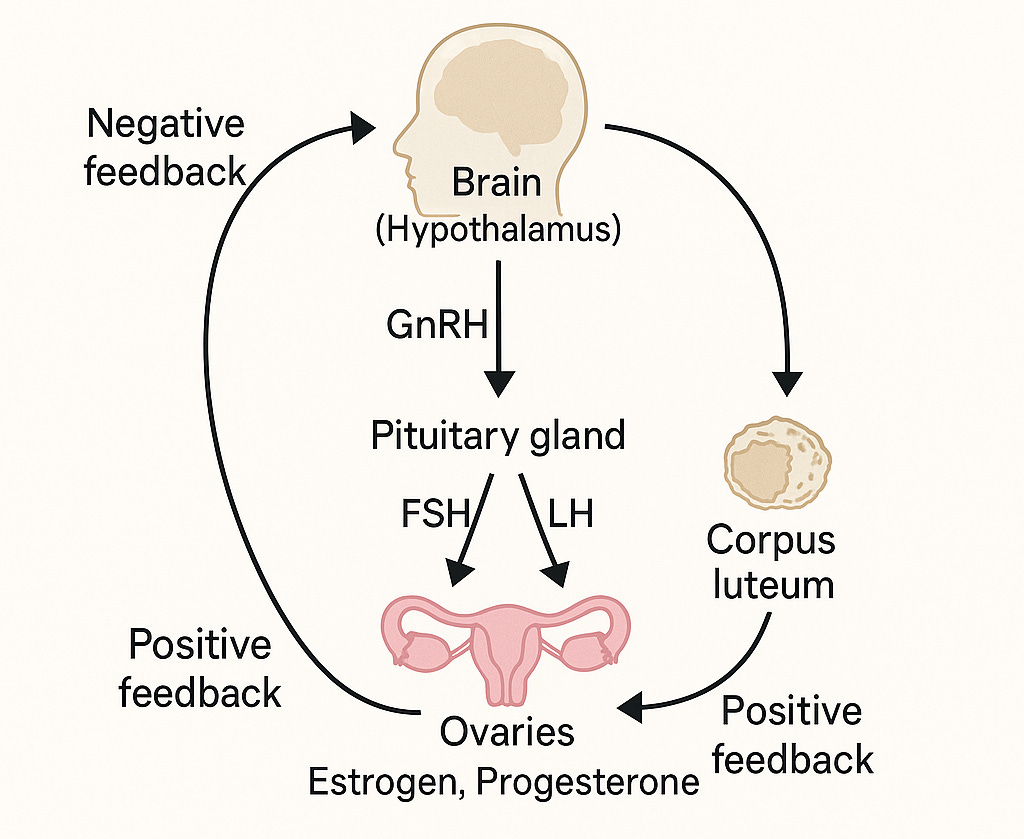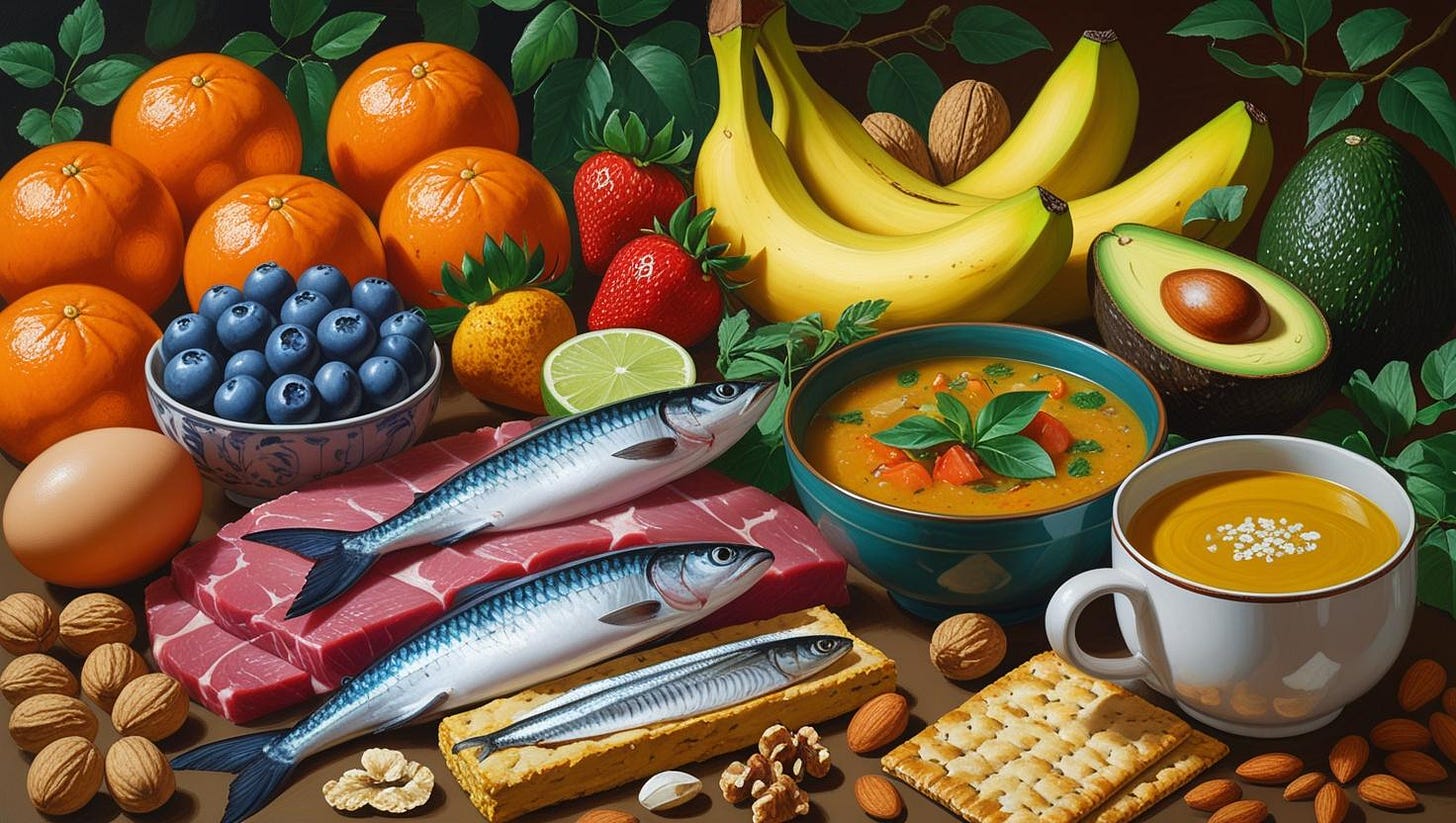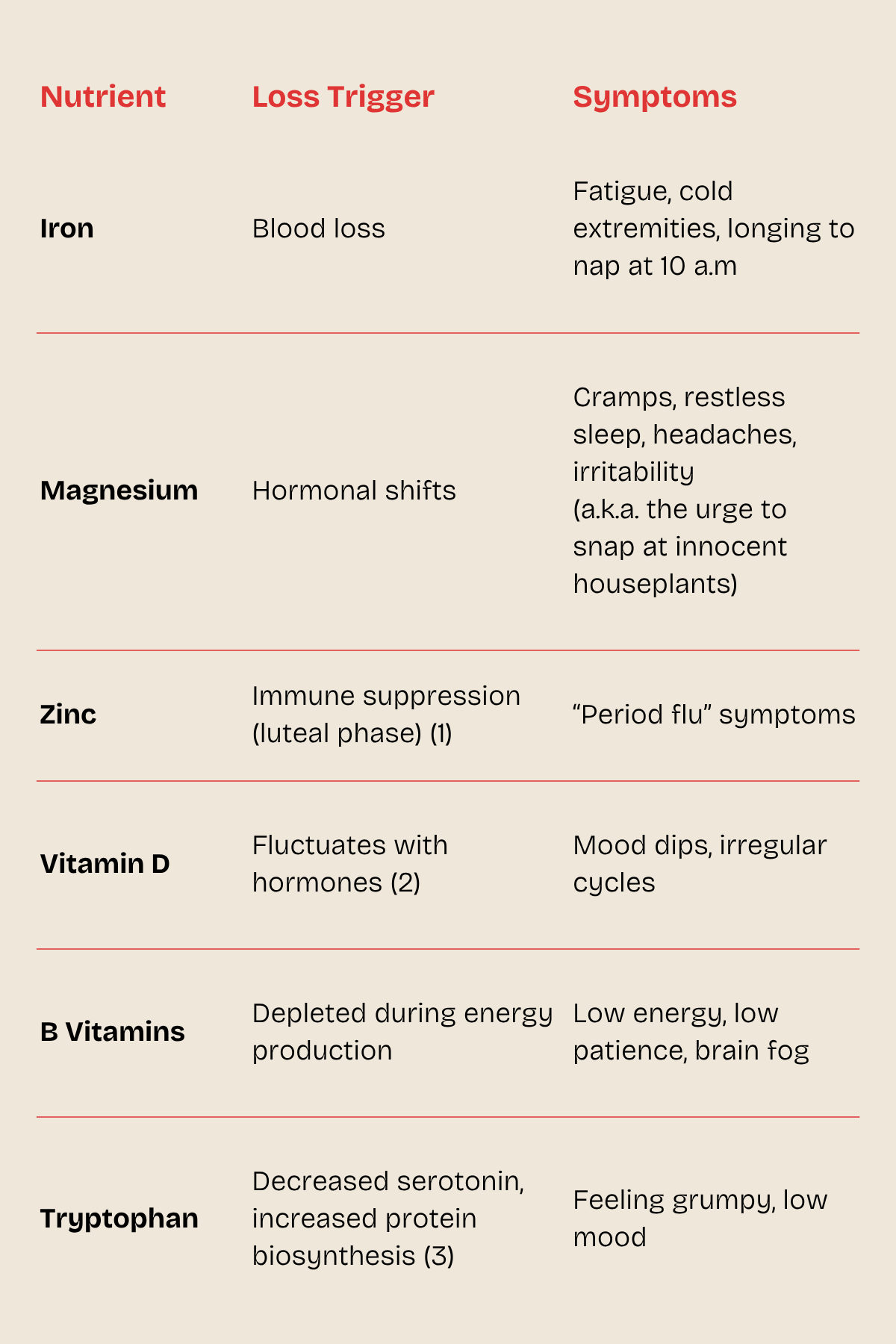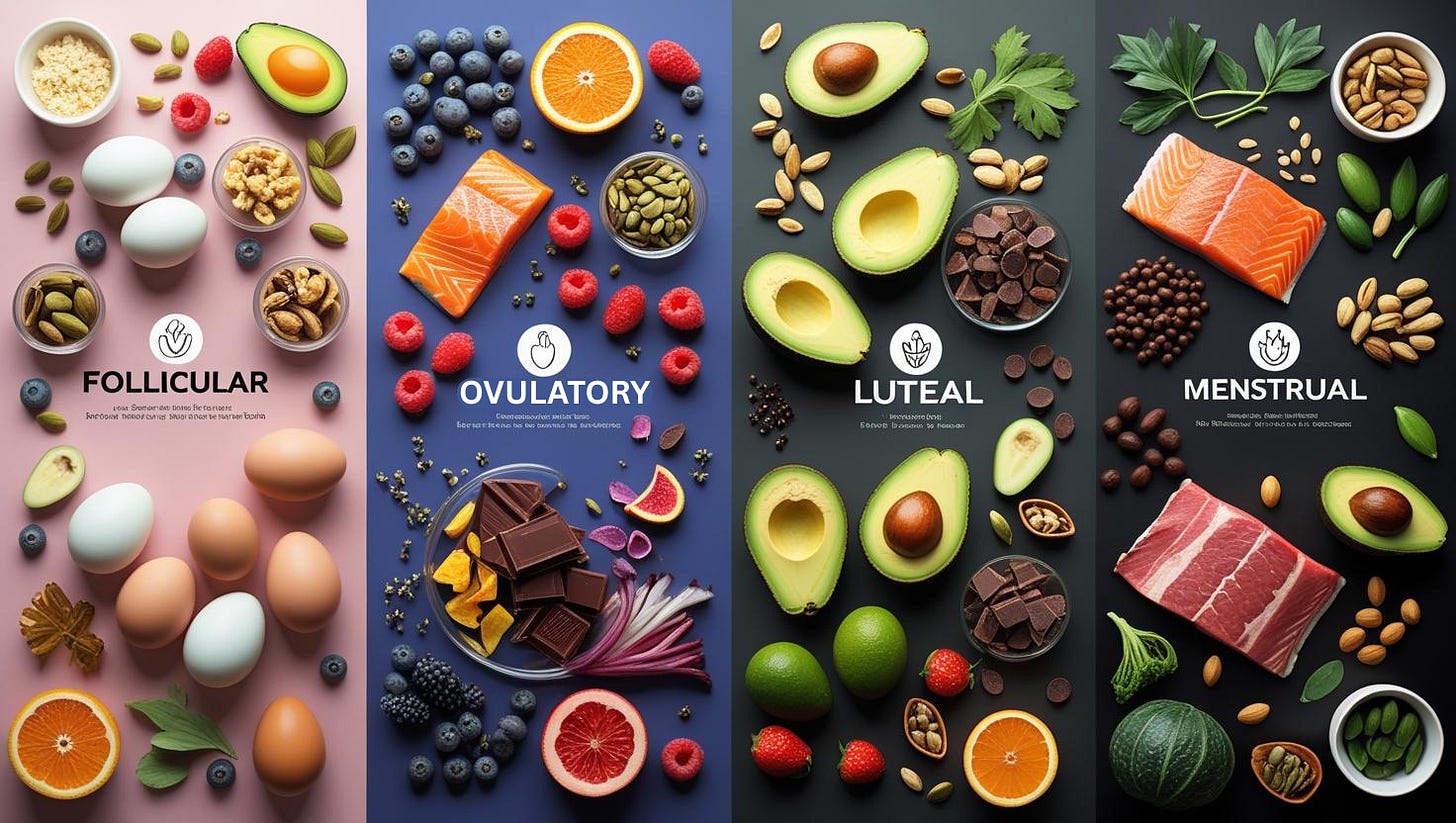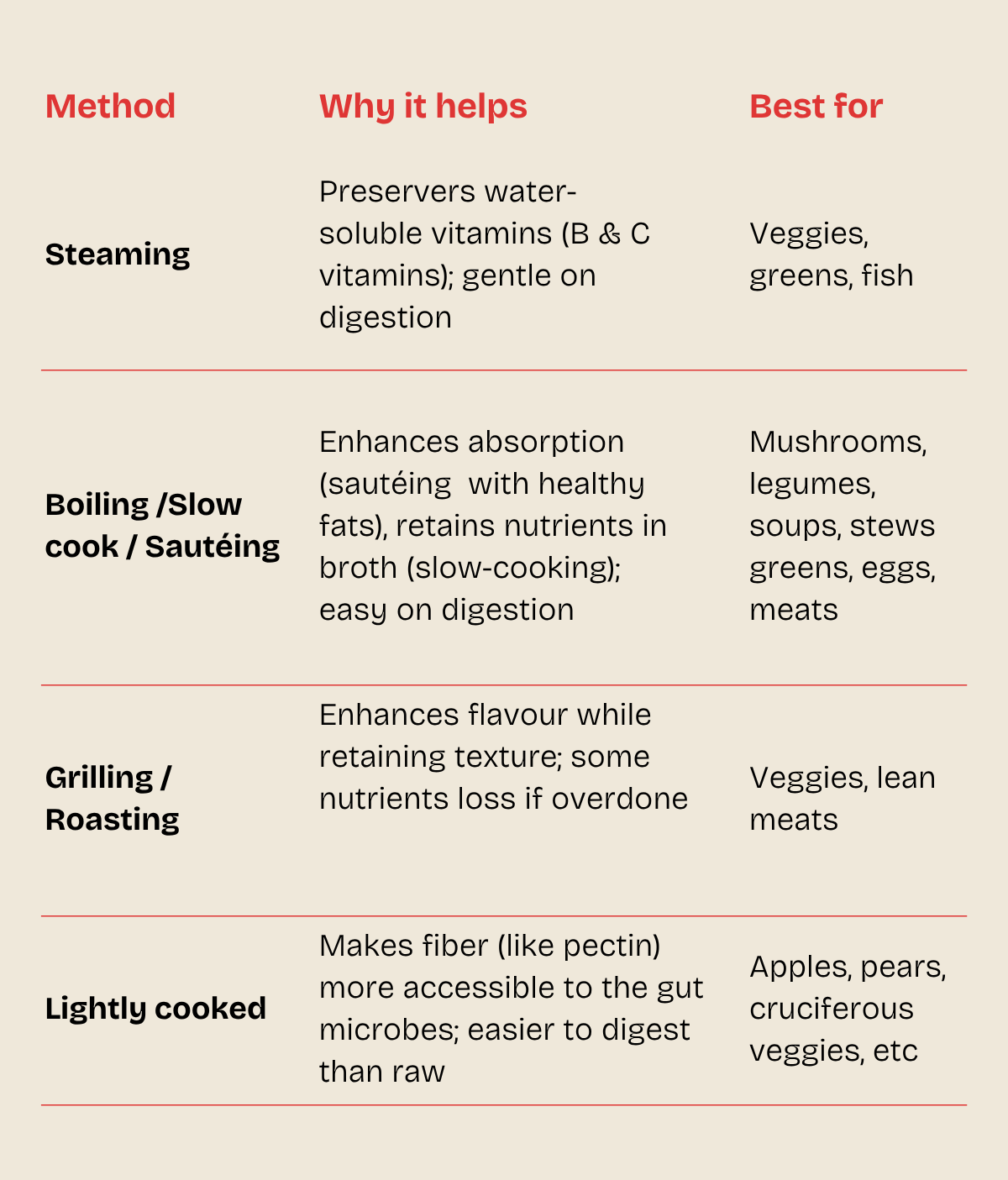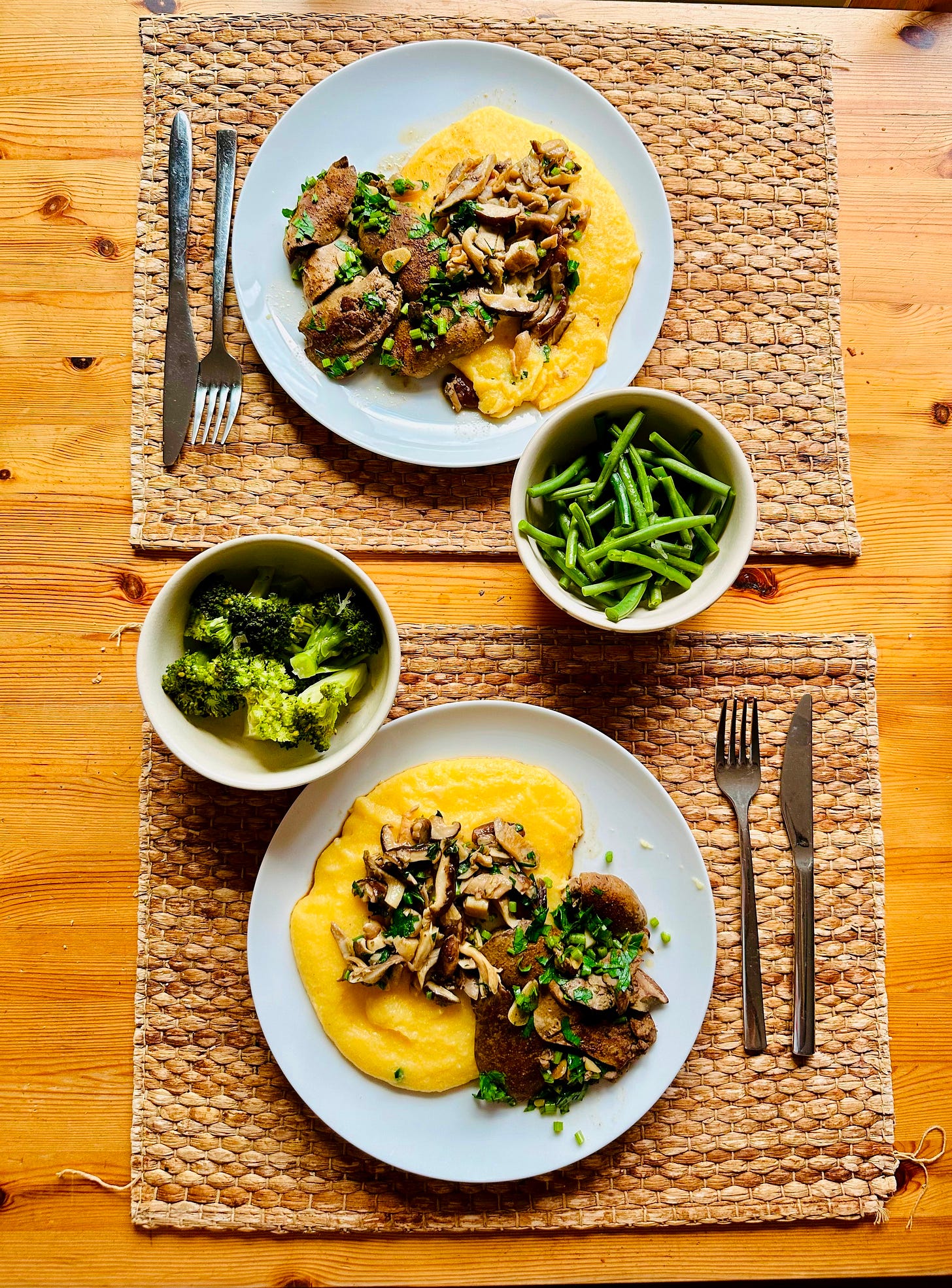Your cycle, your kitchen: when female hormones and hunger collide
How to feed your hormones throughout the menstrual cycle. Plus a gut loving dinner
After years of ongoing internal renovations, my mind and body have finally stopped being at odds and have become more attuned to each other than they were before. It’s like the bridge between the two has finally reopened after years of reconstruction—new shiny steel, smoother roads, toll-free traffic flowing.
Rather than choosing function over form, I integrate them subtly and consistently, often pausing to feel before I think and make a decision.
What’s helped me most is the conviction that a “gut feeling” isn’t just a metaphor but a tool I can always use, since a network of neurons rivalling a small city is camped out in my gut—bright, moody, and surprisingly good at sending signals.
One area where this mindset change is palpable? Hormonal health.
Last night, as I pondered the relationship between female hormones and food, and how they influence cravings, mood, sleep, and food tolerance throughout the menstrual cycle, I decided it was time to dig deeper into the matter.
I’d recently written this post in the Breaking the Fast series, and it felt like the next logical step.
Not only was I keen to explore the mechanics of it more deeply for myself, but I also wanted to create a resource for teens, women in their 20s and 30s—and yes, the men who love them, too.
Because knowledge without a support system? That’s like a car without an engine.
A tale of estrogen, progesterone, LH and FSH and their role in the menstrual cycle
Let’s take a peek backstage at the hormonal cycle.
Each month, four performers—estrogen, progesterone, follicle-stimulating hormone (FSH), and luteinising hormone (LH)—are busy directing, cueing, and occasionally sabotaging one another through a four-phase cycle: follicular, ovulation, luteal, and menstruation. They regulate ovulation and the uterine lining while constantly talking via feedback loops between the ovaries, pituitary, and brain (the hypothalamus).
Think of them as:
The cycle builder —> estrogen
The caretaker —> progesterone
The follicle nurturer —> FSH
The ovulation signal —> LH
Here’s how the show unfolds, based on a combination of research ( 1, 2, 3 ) and experience:
Early Cycle: Estrogen is low, and feedback to the brain is weak. So, GnRH (a hormone from the hypothalamus) pulses stimulate FSH release. Multiple follicles begin to grow.
Mid-Follicular: Estrogen rises and tells the pituitary, “Okay, enough FSH,” via negative feedback. This helps one dominant follicle mature.
Ovulation: Estrogen peaks, flipping the feedback from negative to positive. GnRH pulses more rapidly, triggering a surge in LH, the ovulation signal.
Luteal Phase: Progesterone rises (produced by the corpus luteum), supported by moderate estrogen. Together, they tell GnRH, LH, and FSH to chill out and not trigger another ovulation.
Menstruation: If no pregnancy occurs, estrogen and progesterone levels drop, lifting the suppression. FSH gradually increases again, and a new cycle begins.
Why does this matter?
Because these guys are the behind-the-scenes stage managers of your moods, energy, cravings, and how your gut reacts to everything you eat.
Of cycles, summer and raw salads: When your gut becomes a fussy toddler
As we've entered proper summer, and the temperature is significantly increasing, my body has invoked its right to fresh salads, plenty of fresh fruit, and cold treats.
While during the follicular phase, my gut and stomach are all in—and raw veggies and fruit are welcomed like VIP guests, as I move into the luteal and menstrual phases, my digestive system becomes a fussy toddler. Suddenly, my gut is suspicious of everything.
Raw carrots? Too crunchy.
Salad? Too cold.
It's giving toddler energy, demanding warm, comforting foods and side-eyeing anything green. In a nutshell, here’s what my body naturally prefers—and no, that is not coffee, it’s golden milk.
I tend to get bloated easily, and the sensation of discomfort after meals makes it difficult for me to love raw veggies.
This means I have to adjust not just what I eat, but also how I eat it, to keep my body happy—and to replenish the vitamins and minerals lost each month through bleeding. And it’s not just digestion. A few other patterns started emerging:
🔍 My body's luteal & menstrual clues:
Sleep: I need a solid 9–10 hours instead of 8 (REM and deep sleep take a hit starting in the luteal phase).
Heart rate: My nighttime heart rate creeps up from 50–53 bpm to 60–65 bpm.
Energy: I lean into more nurturing activities—slow mornings, gentle walks, softer workouts, lots of NOs. It’s cocoon mode.
Productivity: Planning and execution take a backseat; reflection comes front and centre.
The nutrient drop: What the body loses (and how you feel it)
A while back, I started tracking symptoms and cravings, and dug into what the science says about nutritional changes across the cycle.
Turns out, the menstrual cycle is a nutrient and immune rollercoaster for the body. Here's what your body sheds—and how you might feel it:
🧠 TL;DR: Your body’s losing more than patience—it’s losing key nutrients. Refuel accordingly.
When food enters the equation: A phase-by-phase survival guide
So then, what do you eat to replenish lost nutrients? That’s a good question, and what experience has taught me is that preparation begins long before the menstrual phase.
🌱 Follicular Phase & Ovulation Phase (Protect the egg, mature the egg)
Focus: Boost estrogen naturally and support egg formation and maturation.
Key foods:
Protein: Eggs, salmon, mackerel, turkey, chicken, yoghurt
Healthy fats: Seeds, nuts, avocado, olive oil
Fibre: Berries, citrus, greens like broccoli and spinach
Complex carbs: Quinoa, oats, lentils, chickpeas
🍂 Luteal Phase (Brace for impact)
Focus: Increase protein and portion size by 5-10% + magnesium, ease PMS symptoms.
Key nutrients:
Magnesium & zinc: Dark chocolate, pumpkin seeds (my fave), nuts, seafood, whole grains
Vitamin C: Bell peppers, berries, broccoli
Anti-inflammatories: Ginger, turmeric, cardamom, fennel
Greens: Broccoli, edamame, green beans
Complex carbs & fibre: Sourdough, quinoa, sweet potatoes, legumes to stabilise mood and energy.
🌙 Menstrual Phase (The cocoon)
Focus: Rest, restore, replenish, reduce inflammation.
Key nutrients:
Iron-rich foods: Beef, liver, organs, lentils, chickpeas
Vitamin C: Citrus, berries, peppers (helps iron absorption)
Magnesium: Avocado, bananas, nuts, seeds
B Vitamins: Quinoa, eggs, room-temperature yoghurt, leafy greens
Omega-3s: Salmon, sardines, mackerel, walnuts, hemp, chia, flax seeds to help with bloating and inflammation.
What you eat matters. How you prepare it, even more 🥘
One of the things I’ve learned from Dr. Michelle Davenport is that what you eat is as essential as how you prepare it. Turns out, your gut is a fan of comfort and technique. Just like bad dates, the wrong cooking method can turn a good thing into a regret.
During the luteal and menstrual phases, gentle cooking methods like steaming, sautéing, and slow cooking are not only easier on digestion, retaining nutrients and tolerance, but also great for longevity.
Outro (and a recipe for you to try)
When your hormones are running the show and your jeans are staging a rebellion, food can be your peacekeeper. Below you will find a cosy recipe to soothe both your hormones and your belly.
What’s your go-to comfort meal when your body says ‘hibernate’? I’d love to hear your cycle-support staples — drop them in the comments.
Duck liver with creamy polenta, sautéed mushrooms and greens
Need a comforting dish that feels like fuzzy socks and a hug from the inside? Enter: duck liver with creamy polenta, mushrooms, and greens. Rich, earthy, buttery-soft and unfussy—this meal is your hormone-friendly dinner date.
Serves: 2
Prep time: 10 minutes
Cooking time: 25 mins
Ingredients
400g duck livers
2 garlic
150g green beans and broccoli or a mix of greens of your choice
250g shiitake mushrooms or a mix of shiitake, oyster, and Shimeji
3-5 sprigs of fresh parsley (to the duck livers and mushrooms after they’re cooked )
Sea salt and freshly ground black pepper
Juice of 1/2 lemon
2-3 teaspoons of ghee to cook the mushrooms and duck livers
1/2 cup of polenta
10 g salted butter
15-20g of grated parmesan or pecorino
Method
Wash and trim the duck livers of sinew, then pat dry.
Trim and wash the green beans, then cut the broccoli into florets. Add the broccoli florets to water with a bit of bicarbonate of soda for about 5 minutes to clean them thoroughly. Then rinse and set aside.
Wash the mushrooms, pat them dry and then cut them into strips.
Meanwhile, preheat a pan over low to medium heat and add 1-2 teaspoons of ghee. Fry the duck livers for 6-7 minutes; when nearly done, deglaze the pan with a splash of water. Season the duck livers generously with a mix of your choice (I used a mix of dried Italian herbs, salt, pepper, paprika, and onion powder), and then garnish with diced parsley. Cover and set aside.
In a different pan, add one teaspoon of ghee and sauté the mushrooms. We want the mushrooms to become slightly charred but not dry. Season with salt and pepper, then drizzle a bit of lemon juice and olive oil over them. Toss them in the pan and garnish with parsley.
Set the green beans in a steamer and, after 10 minutes, add the broccoli for about 3-4 minutes as well, so both are done at the same time.
Lastly, prepare the polenta according to the package instructions. When done, add the butter and grated Parmesan and continue to whisk until it becomes creamy.
Add polenta to a plate, then place the mushrooms on top and next to it, followed by the duck livers, as shown in the picture above.
Serve with the steamed greens.
If you made it this far, your hormones and I thank you. Try the recipe, trust your gut (literally), and if this post helped you, give it a heart, comment or share it with someone whose uterus deserves better snacks.
See you next cycle, friends. xx, Ana



